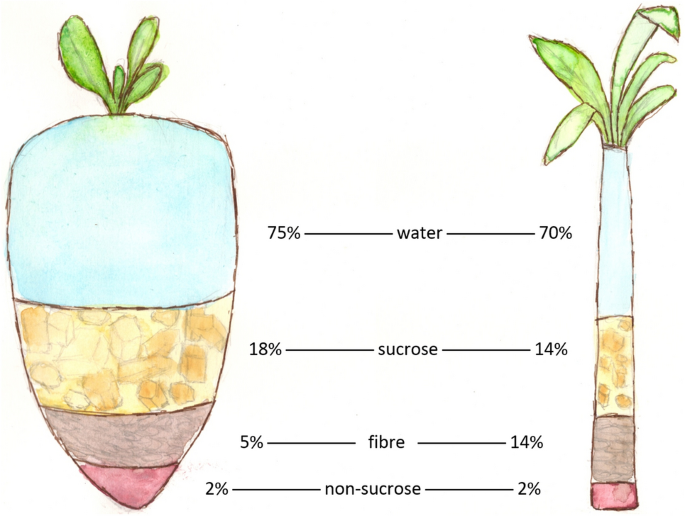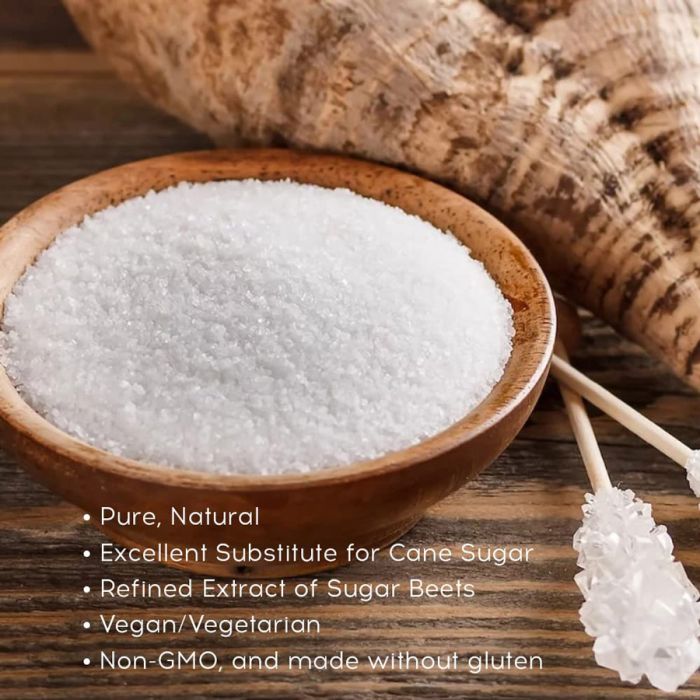The agricultural practices for beet sugar vs cane sugar contribute to differences in production scale.
The agricultural practices for beet sugar vs cane sugar contribute to differences in production scale.
Blog Article
Discover the Uses and Perks of Beet Sugar Vs Cane Sugar in Your Daily Diet Plan
Checking out the distinct top qualities of beet and cane sugar reveals even more than simply their sweetening capacities; it highlights their unique influence on health and culinary arts. Beet sugar, recognized for its subtle flavor, is frequently preferred in fragile treats, whereas cane sugar, with its hint of molasses, includes richness to robust meals. Each type holds its very own dietary profile and glycemic implications, inviting a much deeper understanding of their functions in a balanced diet and lasting intake techniques.
Beginning and Manufacturing Processes of Beet and Cane Sugar

The distinctive climates and dirt kinds required for growing sugar beetroots and sugarcane add to distinctions in their growing techniques and geographical distribution, influencing the economics and sustainability of their production. beet sugar vs cane sugar.
Nutritional Contrast In Between Beet Sugar and Cane Sugar
Despite originating from various plants, beet sugar and cane sugar are nutritionally extremely similar, both primarily containing sucrose. Each offers concerning 4 calories per gram, equating to about 16 calories per tsp. Structurally, both sugars are made up of roughly 99.95% sucrose, with marginal quantities of other materials like dampness and trace minerals, which do not significantly alter their dietary profiles.

Eventually, when choosing between beet sugar and cane sugar based upon nutritional content alone, both deal similar benefits and drawbacks as they are essentially kinds of the same particle-- sucrose, providing quick energy without various other nutrients.
Effect on Wellness: Glycemic Index and Caloric Content
Discovering better into the results of beet sugar and cane sugar on wellness, it is necessary to consider their glycemic index and caloric material. Both sugars are categorized as sucrose, which includes glucose and fructose. This structure leads them to have a comparable influence on blood glucose degrees. The glycemic index (GI) of both beet and cane sugar is around 65, classifying them as high-GI foods, which can create quick spikes in blood sugar levels. This is an essential aspect for people handling diabetes mellitus or those attempting to maintain their energy degrees throughout the day.
Each sort of sugar has about 4 calories per gram, making their caloric web content equivalent. For those keeping an see this website eye on calorie consumption, particularly when taking care of weight or metabolic health problems, understanding this equivalence is vital (beet sugar vs cane sugar). Excessive consumption of any kind of high-calorie, high-GI food can add to health and wellness issues such as obesity, heart illness, and insulin resistance.
Environmental and Economic Considerations of Sugar Production
Beyond health effects, the production of beet and cane sugar also raises considerable ecological and financial issues. Sugar beet growing often tends to need cooler climates and has a reduced geographical impact contrasted to sugar cane, which flourishes in tropical regions. However, both crops are extensive in regards to water use and land line of work, potentially bring about deforestation and water scarcity. Economically, the global sugar market is highly unstable, influenced by changes in worldwide profession policies and subsidies. Lots of countries incentivize sugar production through financial backing, skewing market value and impacting small farmers negatively.
Additionally, the use of chemicals and plant foods in both beet and cane sugar growing can bring about dirt degradation and contamination, more influencing biodiversity and neighborhood water bodies (beet sugar vs cane sugar). The selection between growing sugar beet or cane typically pivots on local environmental conditions and financial elements, making the sustainability of sugar manufacturing an view it intricate issue
Culinary Applications and Taste Differences
While the ecological and financial aspects of sugar manufacturing are indeed considerable, the choice in between beet and cane sugar likewise affects culinary applications and taste accounts. Beet sugar, derived from the sugar beet plant, is understood for its remarkably neutral preference.
Walking cane sugar, drawn out from sugarcane, usually maintains molasses traces, which pass on a distinct splendor and depth. This slight molasses taste boosts the complexity of baked items, sauces, and sauces. It is particularly favored in products where a sugar undertone is desired, such as in brownies or gingerbread. In addition, the small variation in moisture content in between beet and cane sugar can Recommended Site impact the structure and consistency of meals, making cane sugar a favored selection for specific dishes that benefit from its one-of-a-kind residential or commercial properties.

Conclusion
In conclusion, both beet and cane sugar have distinct origins and production processes, offering comparable nutritional profiles with minor distinctions in salt web content and flavor. While their impact on health and wellness, especially relating to glycemic index and calories, is comparable, the selection between them commonly comes down to environmental, financial variables, and details culinary demands. Understanding these elements can guide consumers in making educated choices that align with their health and wellness objectives and taste preferences.
Report this page